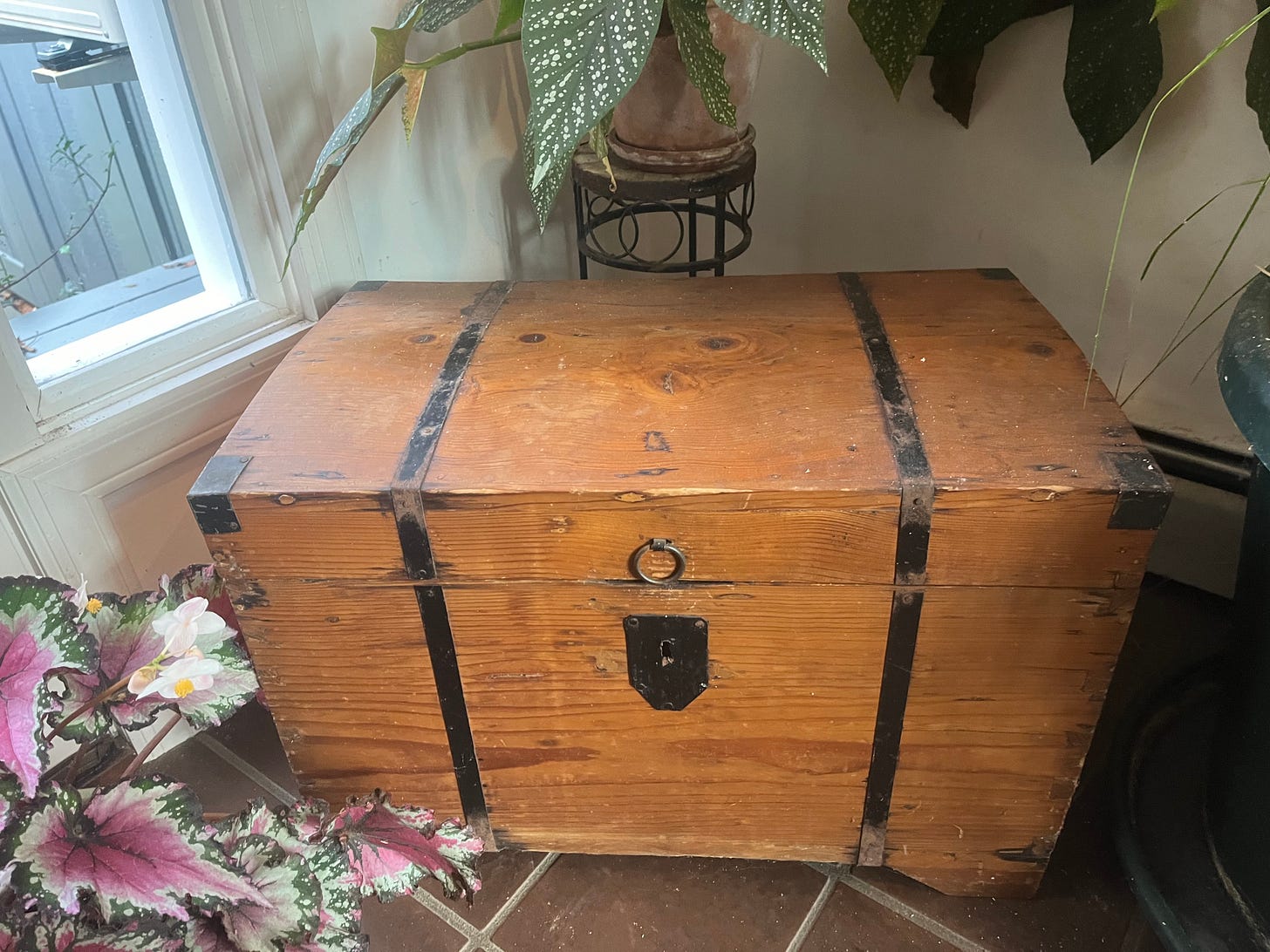The Trunk
In the 1950s my mother dug the trunk out of the attic where it had been stored since my grandmother’s passing.
Upon moving into my house in 1999 I found a spot in the downstairs hall for the wooden trunk. Twenty-five by fifteen inches, it’s a little over a foot deep and rests on two-inch wooden feet. Two thin metal bands encircle the trunk for strength. An iron handle is affixed to each end. Finished with a heavy iron lock, it was constructed in Lithuania in the 1880s when that country was part of Russia. When Tsar Alexander II was assassinated in 1881, his death was blamed on the Jews; the pogroms of 1882 followed. The hated May Laws enacted by his son Tsar Alexander III ended the somewhat lax limitations on the Jewish population restricting where Jews could live and how many would be allowed to attend school.
Jewish men who had previously been barred from serving in the Russian army were now being conscripted for twenty-five years. Induction in the Russian army was considered a death sentence. My great-grandfather and namesake Itzhak Beryl (Isaac Bernard) prohibited from tending the orchard he loved outside the Pale and in fear of being drafted, hastily gathered what resources he could. Before he began his exodus from the country of his birth, he constructed the trunk for Sarah, his sixteen-year-old pregnant wife. When Sarah followed her husband to the new world, with their now two-year-old daughter Yetta, the trunk made up the bulk of their luggage. Most of the small interior was allotted to a family treasure, the elaborate brass samovar Sarah and Isaac had received as a wedding present. As far back as I can remember the samovar was displayed in an honored place in my grandma Yetta’s home.
In the 1950s my mother dug the trunk out of the attic where it had been stored since my grandmother’s passing, and had it cleaned and preserved with polyurethane. Today the trunk is a testament to the late nineteenth century migration of Jews from Eastern Europe, as well as a testament to the restoration projects of the fifties.
The trunk held afghans crocheted by my other grandmother until a few years ago when moths were detected. Now proud but empty it sits in the sunlit downstairs hall that serves as a winter greenhouse for my plants.
My niece has the samovar.






Not expecting that, from a name like MacDonald. By marriage, if I may be so presumptive? My family followed the same trajectory. Except in 1910. My grandparents were all gone by the time I was born. Never learned Yiddish. Did Yetta speak it?
never knew the story behind this beautiful trunk i’ve seen so so many times. love this 💖